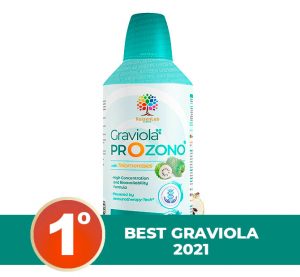
If you or a loved one has been diagnosed with glioblastoma, you may feel overwhelmed and hopeless. Conventional treatment for this aggressive brain cancer is surgery, radiation, and chemotherapy, but unfortunately, it is often ineffective.
Fortunately, there are alternative treatments available that may be more effective in fighting glioblastoma. This blog post will explore the potential benefits of graviola and ozone therapy for glioblastoma patients.
What is the conventional treatment for glioblastoma and why does it not work?
Surgery.
The standard treatment for glioblastoma is surgery to remove as much of the tumor as possible, followed by radiation therapy or chemotherapy. However, because these tumors are often located in hard-to-reach areas of the brain, it is not always possible to remove the entire tumor. Also, even if the tumor is successfully removed, the cancer often comes back (recurs).
Radiotherapy.
Radiation therapy uses high-energy beams of radiation to kill cancer cells or keep them from growing. It is usually given after surgery, but it can sometimes be used before surgery to shrink a tumor and make it easier to remove. Unfortunately, radiation therapy can also damage nearby healthy cells and tissue, causing side effects such as fatigue, nausea, and hair loss. Also, like surgery, radiation therapy does not always prevent glioblastomas from coming back.
Chemotherapy.
Chemotherapy is a type of cancer treatment that uses drugs to kill cancer cells or stop them from growing and dividing. It is usually given after surgery, but it can sometimes be used before surgery to shrink a tumor and make it easier to remove. Unfortunately, chemotherapy can have many side effects, including hair loss, nausea, vomiting, and fatigue. Also, like surgery and radiation therapy, chemotherapy does not always prevent the recurrence of glioblastomas.
What is the alternative treatment of glioblastoma. ?
The Graviola:
Graviola is a tree that grows in the tropical rain forests of South America, Africa, and Southeast Asia. Indigenous peoples have used the leaves and fruit of the graviola tree for centuries to treat a variety of conditions, including cancer.
There is a growing body of scientific evidence supporting the use of graviola in cancer treatment. Graviola leaves and fruit contain compounds that are toxic to cancer cells but not to healthy cells. These compounds can kill cancer cells by causing them to rupture and rupture.
Additionally, graviola appears to stimulate the immune system, making it more effective at attacking cancer cells. Several studies have shown that graviola can shrink tumors and improve survival rates with various types of cancer.
There is already some evidence that graviola may be an effective treatment for glioblastoma. One study found that a compound isolated from graviola could kill glioblastoma cells in culture without harming healthy brain cells.
Another study looked at the effects of a graviola extract in patients with advanced-stage cancers that had not responded to standard treatments. Patients received shots containing graviola extract or shots of graviola extract with ozone.
The study found that those who received graviola had an overall survival rate of 71% after one year, while those who received graviola with ozone had an 86% survival rate. These results are very promising and suggest that further investigation of graviola as a treatment for glioblastoma is warranted.
conclusion
The current conventional treatment for glioblastoma is surgery, radiation therapy, and chemotherapy. However, these treatments are not always effective and can have serious side effects. There is a complementary treatment for glioblastoma that uses graviola and ozone. This treatment is less invasive and has fewer side effects. Graviola and ozone can also be combined with conventional treatments to improve the chances of success.
You can already find natural supplements that contain graviola and ozone in the recommended amounts and ready to drink.





